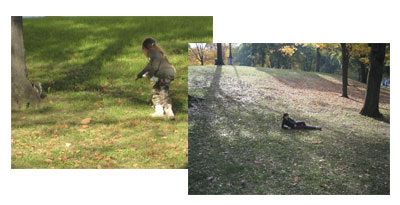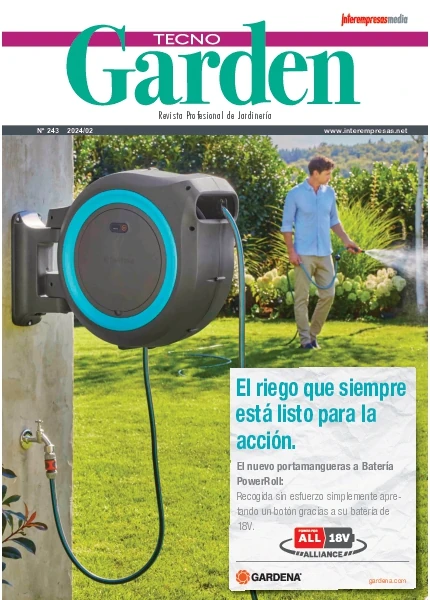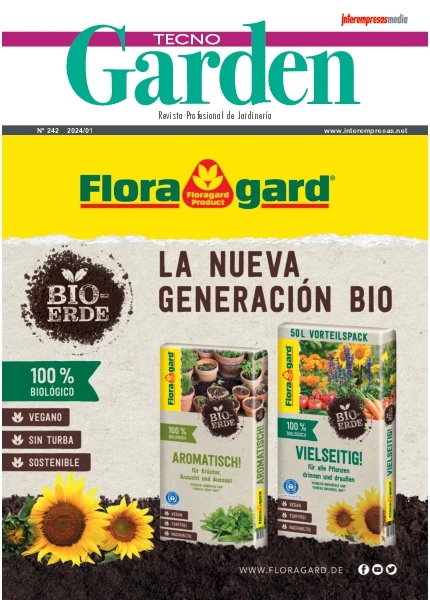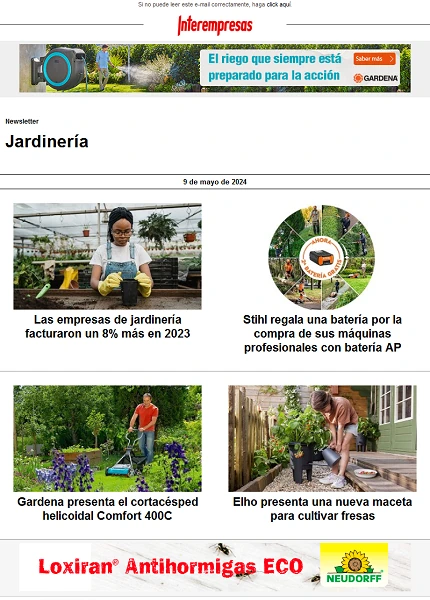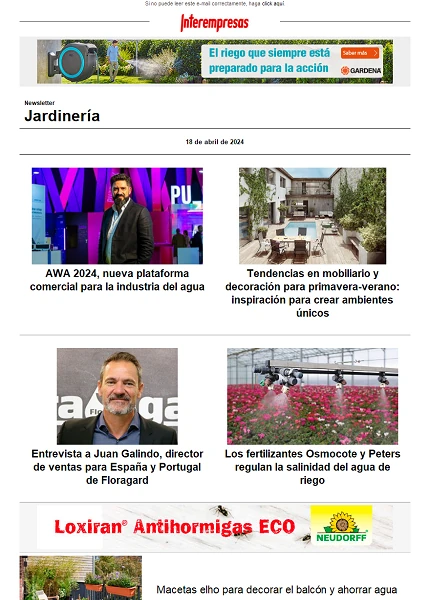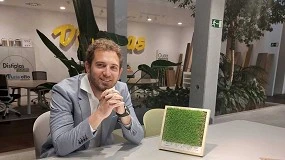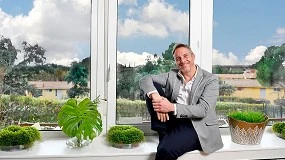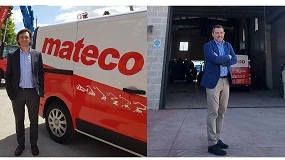Grass: towards a new concept of gardening
May 25, 2009
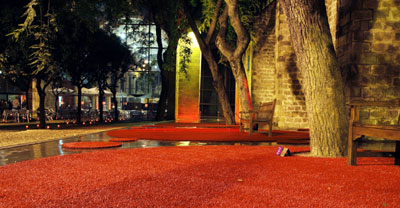
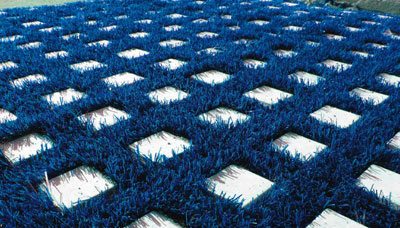
The destined water to the irrigation of green zones has come increasing in the last years of remarkable way because of the increase of the same, so much of public gardens like private; some figures situate in 50% the destined water to irrigation, of the total of the urban water used. This circumstance poses the need to do a more rational use of the water in gardening and to establish a new culture of the water, that avoid the wasteful and increase the efficiency in the uses of this very scarce. The sectors of the gardening and the paisajismo have takeed the initiative in the promotion of new technicians for the saving of the water, that go from the utilisation of suitable species until new technologies or practical agronómicas suitable to the handle of a garden of low consumption of water.
Gardening of lawn
The fashion of the big surfaces of lawn, the calling “English garden”, has manifested irrational and already atisba a change of model. The detractores of the meadows of English lawn allude to the dependency of the chemical products that involves to achieve a healthy plantation; in operations of credited and treatments of crash in front of illnesses or plagues, incorporate waste to the floor, that with the irrigation will finish happening to the groundwaters. Other arguments refer to that the development of the gardening of lawn is spreading a prototype of extraneous residential gardening to our culture and to the ancestral knowledges of the population, and to the lack of respect that has , in general, to these green zones, when they are public, that suffer a continuous deterioration by the bad deal that it receives, as well as by the action of the animals of company.
What is the xerojardinería?
The xerojardinería contributes the use of the technology to the garden, through the realisation of technical agrológicas that allow to obtain a garden of quality with a low consumption of water, respectful with the environingingment and with a low cost of maintenance. The concept was cream in USA (xeriscape) and was entered in Spain with the name of Xerojardineria by Silvia Burés. In 1986 it created the National Xeriscape Council with the purpose to boost the creation of xerojardines. This organism collected the technicians of the xerojardinería in seven principles. See them.
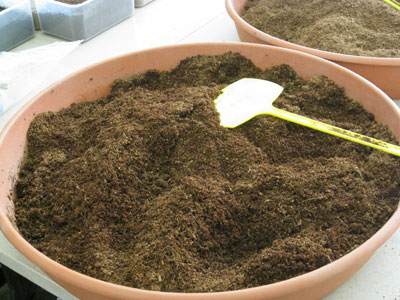
-Get to know the properties of the soil in order to use species that suit (pH, to salinity, depth of soil, to the possibility of ponding, etc.) and use the reserve of water from the soil to schedule irrigationroots deepen and take advantage of the water in a large soil volume.
-Select plants adapted well to the area where is necessary to establish the garden, learn about climate and microclimates for power plants suitable to each place.
-Make efficient use of the turf, and avoid locate in areas where is of no use, such as margins and slopes, and use species and selected varieties of grasses that are more efficient in the use of water.
-Use different systems of irrigation according to the different species and areas to irrigate, using more efficient systems on the utilization of the water, such as the drip.
-Using techniques such as soil or mulching decks, to reduce losses by evaporation and cover marginal areas that hamper the establishment of plants.
-Make a maintenance of the garden to help plants to better benefit the water (by pruning, siegas, State plant health and paid); maintenance that has to go in the direction of the development of the roots and to give increased resistance of plants to drought.
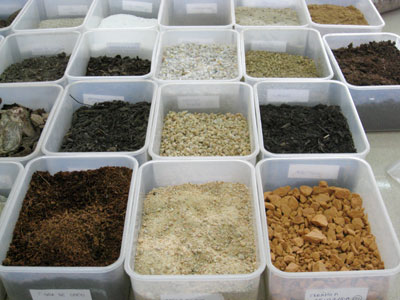
The xerojardinería, not because the search for sustainability renunciation of the technology, but quite the opposite. As an example of the application of technology in xerojardinería we see that this discipline is proposing the use of absorbent polymers hidrorretenedores or hydrogels are substances capable of retaining up to 400 times its volume in water and that they hold it pressed with a force less than that which can be the root of the plant to obtain it. This will result in a higher biological activity of the soil and reduce erosion of the same.
The natural grass advocates argue that the information bombardment on climate change has placed the lawn in the crosshairs of public opinion, which sees this plant element as the Devourer of an irreplaceable resource, water. This has led to growing consumption of artificial grass. From these positions, it is argued that while natural grass consumes CO2 and produces oxygen, the artificial demands in its production the consumption of fossil hydrocarbons, with the consequent emission of CO2, in addition, they set out from Zulueta Corportación, "at the end of its life cycle becomes a residue of problematic elimination".
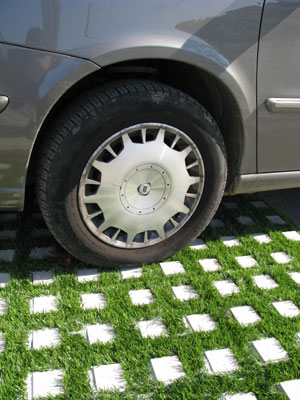
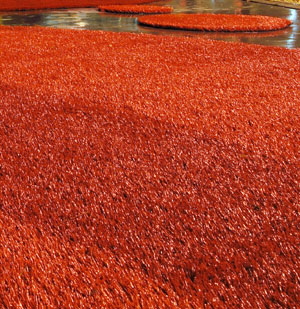
Defenders of the artificial turf, for their part, argue that it is easier to maintain and more cost effective than the natural. In this sense, from Verdalia give us their arguments in favour of the synthetic product: "does not need large amounts of water in comparison with natural grass." If we planting grass in an area with the average of Spain rainfall, it does not subsist without our help. "Water consumption is estimated at 1,780 litres per square metre of natural grass each year". It also refers to the resources and energy needed to maintain the natural grass in conditions, such as emissions and consumption of oil of mowers machinery and gardening. Waste generated by mowing and the use of pesticides and fertilizers on Earth is another argument against the natural grass.
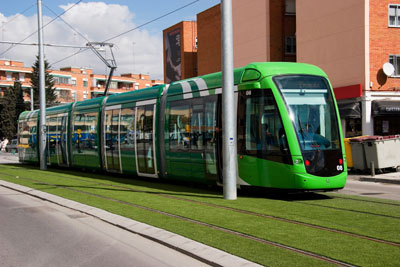
A sustainable garden is the one where native and introduced plants are adapted to the existing light, humidity, soil conditions, and require little labor and few fertilizers, herbicides, insecticides and fungicides for its development, at the time that preserves and protects the balance of nature, and provides an aesthetic pleasure.
The growing interest in sustainability and ecology represents an interesting opportunity for the sector. The integration of natural elements in buildings and constructions is one of the most significant new features and higher. Plant architecture, aimed at improving the quality of life in cities, materializes, basically, in plant walls and roof garden. Some of the main ecological benefits these architectural solutions are: the capacity of water retention and savings of material of the system of evacuation; reduction of global warming and increase the humidity of the air; reduction of air pollution, as the vegetation generates a filter effect; and the creation of compensation from other open surfaces. Other benefits, the economic case, what has come to be called the naturalization are the improvement of the thermal and acoustic insulation of the building, the increase of the floorspace for playgrounds or sports areas, and the increase in the value of the building by its uniqueness.
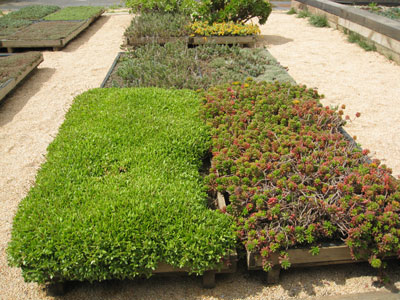


The National Association of sustainable architecture (ANAS), together with the National Association for the housing of the future (ANAVIF) and the national directory of business to sustainable architecture (DINAS), submitted on 20 April in the latest edition of Construmat, this special house designed by the architect Luis de Garrido, the Green Box. The most unusual element of this project is its landscaped deck inclined and vertical garden. Both gardens have been composed based on native plant species of the Mediterranean, which ensures that just need water (only of rain) and permanent beauty every day of the year. Nor do they need maintenance. The inclined cubierta-jardín is established as an extension of the surrounding soil.

During the past days 21 and 22 April the Polytechnic University of Valencia hosted the first Conference of the society European of the lawn, which focused primarily on the quality of irrigation water and stress by drought and its influence on the behavior of the cespitosas (species of seed for turf). According to Diego Gómez of Barreda, Professor in the Department of plant production of the Polytechnic University of Valencia and coordinator of this event, "Valencia, as well as most of Spain, is influenced by the Mediterranean climate, characterized by mild winters and very hot and dry summers." "Because of this, cespitosas species have great difficulties in adequately develop throughout the year, irrigation to be one of the most important critical points of the management of any cespitosa surface, either sport, ornamental or entertainment".
The Conference, which took place in the Auditorium of the UPV, are born with the objective of becoming a forum for the exchange of experiences between experts from academia, government agencies and companies.
Among the conferences that have taken place, stressed the own Professor Gómez Barreda, who spoke of the behavior of cespitosas commercial varieties of English ray-grass. Barreda Gomez explained that "different essays on cespitosas species occur in the Polytechnic University of Valencia and there is a collection of more than 50 species of temperate climate (C3) commercial varieties in rectangular plots of 2 m2", of the genus Agrostis, Lolium, Festuca and Poa. This collection is intended to keep track of their behavior in the climate of the city of Valencia (Mediterranean climate), because, although varieties of high quality, the houses of seeds imported from USA."U.S., must be to see how adapt to the particular climate of Spain, in this case to the Valencian". As the submitted study's conclusions, Prof Gomez noted that "there is a variety that is globally on the others, GLR Paragon, Paragon improved variety for its resistance to the ' Grey Leaf Spot' (disease caused by Pyricularia grisea)." "The other varieties behave, in general, more or less Similarly, least Belida and calibrates varieties which are not recommended for its sowing on golf courses".
New airs blow into the new consistory. If Giuliani succeeded in making a New York safer, "cleaning up" the city to the point almost of sterilizing her changing lumpen Times Square by floods of tourists hypnotized by the neon, the current Mayor Michael Bloomberg has launched a green revolution in line with the new ecosensibilidad which is also observed in the rest of the country. The so-called 2030 PlanNYC detailed actions to be followed to achieve a reduction of 30% of the emissions of gaseous pollutants, and including the newborn pilot to close to traffic based on the emblematic Avenue, Times Square and turn it into pedestrian area. In addition, by that date, the city will increase your green area no less than 16.187.425 m2. And that, despite the economic situation, it seems that the "green agenda" go ahead.
Here are some data for reflection: New York has six square meters of green area per capita and 20% of its population lives less than ten minutes of a park. The total surface of green area in the Big Apple is 117.350.000 m2.
